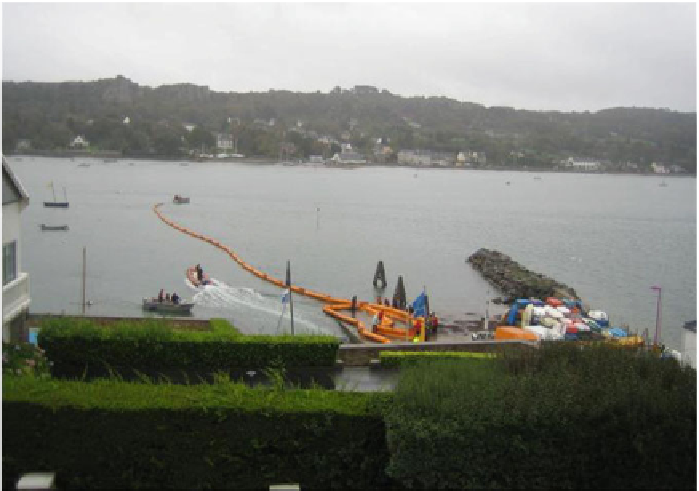Environmental Engineering Reference
In-Depth Information
Fig. 7.5
Launching of the boom in the Elorn estuary
shackle. The measurement period is 15 s and the maximal measurable tension is
20T. This sensor gives mooring tension data at point
D
via an antenna into a data
logger mass storage strapped on the top platform of the buoyancy coffer. To measure
the vertical skirt angulation, three lightweight sticks are attached to connections
throughout curtain section
CD
. Using a photo of these sticks can give their respective
angles by a simple post-treatment. The La Rochelle experiment permits the stick
design improvement as well as its attachment on the curtain connection.
At last, we describe the sensors installed on a small boat running around the boom.
An ADCP current meter uses four 600kHz signal transducers. These ones built a
set of three conic surfaces forming a 40
ⓦ
divergent. A valuable modulation of the
acoustic signal has been defined during the La Rochelle preparatory experiment. Two
current meters placed at a depth of 0.8m are used to calibrate the ADCP sensor. It
permits to measure the 3D sea current velocity components throughout the water
column. The depth of the first cell is 0.39m. The distance between two cells is 0.2m.
The depth of the last cell is 6.99m. The sampling period is 5 s. The measurements
are made for upstream and downstream flows in the vicinity of the boom. The water
column height is equally measured.
Tomeasure directly the boomgeometry aman-handGPS is applied by considering
the positions of the curtain section connections. The boat running around the boom
permits two measures (upstream and downstream runs) for each connection. Taking
into account the variable environment of the boom, these two measurements must
be as close as possible during time. Measurement of the barrier geometry with a

Search WWH ::

Custom Search